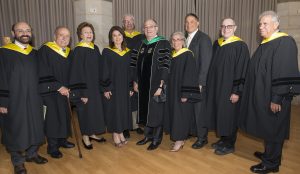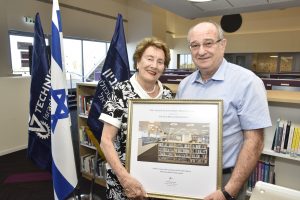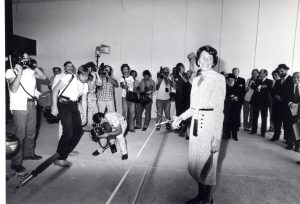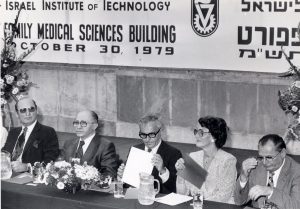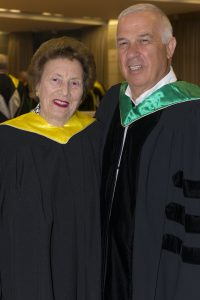Category: Uncategorized
Orthodontic Surgery with an Enzymatic Blade: No Incision Necessary
Technion researchers have developed a technology that replaces scalpels with natural biological materials
HAIFA, ISRAEL (February 15, 2018) – Researchers at the Technion-Israel Institute of Technology have developed a nanotechnology that replaces the surgical scalpel with an “enzymatic blade.” In an article published recently in ACS Nano, the researchers describe the application of this technology in a surgical procedure in the oral cavity. The application spares the pain associated with orthodontic surgeries and significantly reduces tissue recovery time.
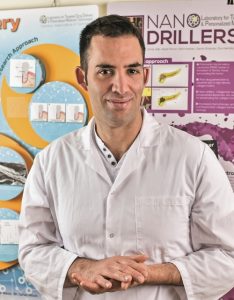
The study was led by Dr. Assaf Zinger, within the framework of his doctoral research, mentored by Assistant Professor Avi Schroeder, the director of the Laboratory of Targeted Drug Delivery and Personalized Medicine at the Wolfson Faculty of Chemical Engineering. The novel technology is based on rational use of enzymes – biological molecules the body uses to repair itself, as well as on use of nanoparticles for achieving a targeted therapeutic profile.
In the United States alone, approximately five million people undergo orthodontic treatment each year. To speed up treatment, which typically lasts about two years, many undergo invasive surgery, in which collagen fibers that connect the tooth to the underlying bone tissue are cut.
The technology developed at the Technion softens the collagen fibers via the targeted release of collagenase – an enzyme that specifically breaks down collagen. Using techniques developed in Schroeder’s lab, the collagenase is packaged into liposomes – nanometric vesicles. As long as the collagenase particles are packaged in the liposome, they are inactive. But with this special nanotechnology, an ointment is applied on the target site, so that the enzyme begins to gradually leak from the liposome and soften the collagen fibers. The researchers performed a series of tests to determine the collagenase concentration optimal for the procedure and to accelerate tissue repair thereafter.
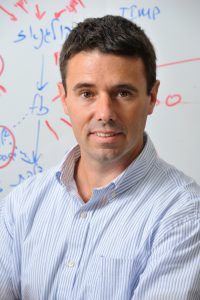
In a preclinical trial, the researchers compared the efficacy of the controlled-release system (in combination with braces), to that of standard orthodontic treatment and concluded that the system reduces the time required for straightening teeth and improving therapeutic outcome. This would translate to an orthodontic treatment in humans that lasts several months, instead of two years. The researchers estimate that it could be used in humans within a couple of years.
While the ACS Nano article presents a specific application of the “enzymatic blade” in the orthodontics field, the researchers emphasize that the new paradigm can be applied in a variety of surgical procedures. “Over thousands of years, the surgical knife has been upgraded, however, the general paradigm has not changed. Here, in the current study, we present a considerable paradigm shift: replacing the metal blade with a biological process.”
Also taking part in this research collaboration were physicians at the Sourasky Tel Aviv Medical Center Department of Pathology and the Rambam Medical Center Department of Oral Maxillofacial Surgery, and the director of the Moriah Animal Companion Center. The research was supported by grants from the European Council and European Union, German-Israeli Foundation for Scientific Research and Development, various Israeli foundations and Alon and Taub Fellowships.
Click here for the paper in ACS Nano
The Outstanding Teacher
Technion President: “During the seven years in which the Yanai Prize for Excellence in Academic Education has been awarded, there has been a marked improvement in the quality of teaching at Technion”
Chairperson of the Technion Students Association Omer Amit: “Yanai Prize recipients provide students with something that they can’t learn from a computer – independent and creative thinking and a recognition of the beauty of the study material”
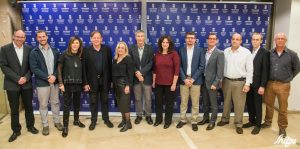
The Yanai Prize for Excellence in Academic Education was awarded for the seventh consecutive year to five outstanding Technion professors and to the Technion Faculty of Civil and Environmental Engineering. In addition to the prizes for excellence, an Educational Initiatives Scholarship and the Yanai Honorable Mention in Education were also awarded.
The ceremony was attended by Moshe and Rachel Yanai, Executive Senior Vice President Prof. Adam Shwartz, Executive Vice President for Academic Affairs Prof. Hagit Attiya, representatives of Technion’s management, the prize winners and their families, professors and students. The prestigious prize was awarded for the seventh year in a row “in honor of and appreciation for members of the academic faculty who set an example through their continuous contribution to teaching and learning and their efforts to strengthen Technion students’ involvement and sense of belonging.” The ceremony was hosted by Prof. Alon Wolf from the Faculty of Mechanical Engineering, who received the Yanai Prize in 2014.The 2017 Yanai Prize recipients are:
- Professor Michael Elad – Faculty of Computer Science
- Associate Professor Gil Alexandrowicz – Schulich Faculty of Chemistry
- Associate Professor Josue Sznitman – Faculty of Biomedical Engineering
- Assistant Professor Ram Band – Faculty of Mathematics
- Assistant Professor Mahmood Jabareen – Faculty of Civil and Environmental Engineering
Technion President Professor Peretz Lavie’s speech was read by his wife, Dr. Lina Lavie, as he was unable to attend due to the funeral of Ruth Rappaport, a great friend of Technion. The president noted that the Yanai Prize has already become a success story. “During the seven years in which the prize has been awarded, there has been a marked improvement in the quality of teaching at Technion. This change is reflected in the student feedback questionnaires, which, in the past few years, have shown a steady rise in the average score given to professors and in the percentage of professors rated at the high end of the scale. In addition, Technion’s ranking has risen in annual nation-wide student surveys measuring satisfaction with teaching quality. The Yanai Prize, which has become well-known and highly esteemed even outside of Technion, has contributed significantly to these changes.
Last November, the British weekly Times Higher Education published a survey that ranked Technion as the leading institution in the world for imparting digital skills to its students and training them for the digital revolution. At the heart of the matter lies the universities’ existential need to adapt to the digital era and to modify timeworn teaching and learning methods in order to remain relevant.”
“With such professors and educators,” continued President Lavie, “I am confident that the next generation of Technion graduates will be top-notch researchers, engineers, doctors and architects, each in his or her own discipline, and just as importantly – moral, compassionate, tolerant and humane people, values they absorbed from their teachers during the years they spent here.”
Prof. Hagit Attiya, Vice President for Academic Affairs, chaired the Prize Committee. She remarked that, “the Yanai Prize is the most important prize awarded at Technion for excellence in teaching. All recipients carry the teaching torch and exemplify the precept that a teacher must be understood but not taken for granted.”
At the ceremony, Technion alumnus Moshe Yanai, who, together with his wife Rachel, donated 12 million dollars to establish the Prize seven years ago, said that, “turning human capital from a catchword to practice is a huge challenge, since personal motivation is driven by self-promotion. We all yearn to progress, to support our families, to advance our career and to publish articles. Faculty members who invest in teaching do not get credit for doing so, and therefore they must be appreciated and recognized.”
Omer Amit, Chairperson of the Technion Students Association, said that, “while in the past, professors gained power through obedience to authority and privileged access to information, nowadays all human data is accessible to every student on his smartphone. Apart from delivering information, good professors provide their students with true leverage for the future: creativity, critical thinking and problem-solving skills. This is what distinguishes Yanai Prize winners: they can provide the student with something that they can’t learn from a computer – independent and creative thinking and a recognition of the beauty of the study material. These are people who don’t view research and teaching as two opposing worlds, but, rather, as two means of reaching the same goal.”
“When we teach, each student must feel that we are talking to him or her,” said Assistant Professor Ram Band of the Faculty of Mathematics, who spoke on behalf of the prizewinners. “It’s all a matter of wording, speech, interaction and manner of leading a discussion, which can all be done without compromising the Technion standard of excellence. Love of education, a passion to understand and aspiration for clarity accompany me from the home in which I grew up. These are the foundations that have led me to a career in education and teaching. In the name of the prize winners – we thank you for selecting us.”
Additional prizes were awarded this year as part of the Yanai Prizes: Associate Professor Yossi Gil from the Faculty of Computer Science won a Yanai Educational Initiatives Scholarship for developing a Q&A database for exams, and the Yanai Honorable Mention in Education went to Associate Professor Omri Barak from the Rappaport Faculty of Medicine.
The Faculty of Civil and Environmental Engineering was awarded the Outstanding Faculty Award. The faculty’s dean, Prof. Oded Rabinovitch, a past Yanai Prize recipient himself, said that “the ceremony is a cause for celebration, not only because of the award, the honor and the attention, but also because it forces us to be introspective. Our activity is founded on three values: variety, which includes international students, students from the periphery and students from all sectors of Israeli society; connection to the community and society, and involvement in environmental, social and other issues; and the understanding that students are not our clients, but, rather, strategic partners working with us toward common goals – improving society and mankind.”
About the Yanai Prize
Moshe Yanai, a global pioneer in the field of information storage, sought, via his donation, to give back to Technion, as a way of thanking and showing appreciation for the tools the institution provided him during his studies 40 years ago. Since he recalls his years at Technion as being difficult, and at times even traumatic, he decided, together with Technion President Professor Peretz Lavie, create a prize to be awarded to professors who have demonstrated teaching excellence, and thereby also contribute to Technion students. The prize money of 100,000 shekels is awarded to each recipient, and will be given over a period of 20 years.
Ruth Rappaport, 1924-2018
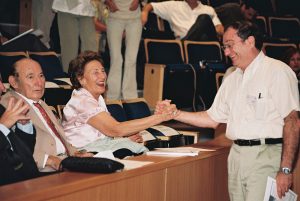
Ruth and Baruch were the generous benefactors behind the establishment of the Rappaport Faculty of Medicine at Technion and the Rappaport Family Institute for Research in the Medical Sciences, which they continued to support over the years out of the conviction that, “Patients have no borders and therefore medicine can be a bridge to peace.”
Ruth Rappaport was born in Berlin on April 6, 1924. In 1933, following Hitler’s rise to power, her family immigrated to Israel and settled in Tel Aviv and later in Haifa. At the age of 18, she met Baruch, a meeting that led to 65 years of marriage, which ended with Baruch’s passing in 2010. Baruch, a native of Haifa, served in the British army and the IDF, completed law studies and established successful businesses in banking, shipping and oil.
Ruth Rappaport dedicated her life to helping others and over the years served as Co-Chair of World WIZO and as Chair of the Inter-Maritime Foundation for the Advancement of Humanitarian Projects. She raised funds for daycare centers around the country believing that, “The future lies in children and the family, and every amount collected today will bear fruit in future generations.”
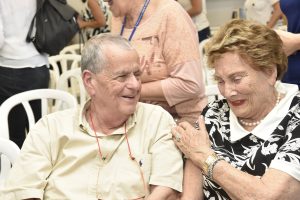
In 2014, the Technion awarded Ruth Rappaport an honorary doctorate “In gratitude for your work as a philanthropist of the first rank; in recognition of your generous humanitarian spirit and support of a variety of cultural, social, and health initiatives; and in appreciation of your support of numerous educational and child welfare projects, which improve the quality of life in Israel.”
The Technion mourns the passing of Mrs. Ruth Rappaport and extends heartfelt condolences to the entire Rappaport family.
[su_youtube url=”https://www.youtube.com/watch?v=D4hmTZZxKFY” width=”700″ height=”200″]
Future of Semiconductor Lasing: Topological Insulator Lasers
Applying topological physics to lasing creates more highly efficient and robust lasers
Haifa, Israel February 1, 2018 –Israeli and US researchers have developed a new highly efficient coherent and robust semiconductor laser system: the topological insulator laser.
The findings are presented in two new joint research papers, one describing theory and the other experiments, published online by the prestigious journal Science on Thursday, February 1.
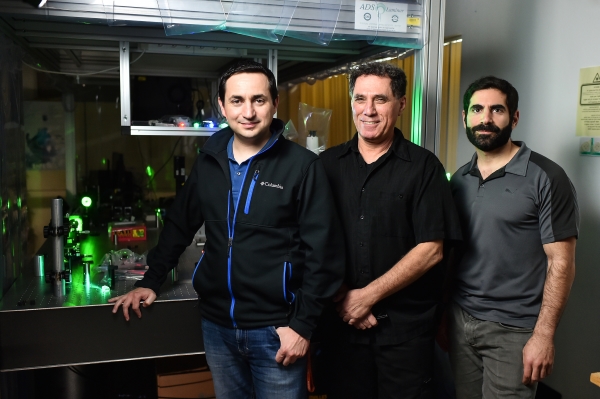
Credit: Nitzan Zohar, Office of the Spokesperson, Technion
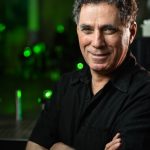
Topological insulators are one of the most innovative and promising areas of physics in recent years, providing new insight into the basic understanding of protected transport. These are special materials that are insulators in their interior but conduct a “super-current” on their surface: the current on their surface is not affected by defects, sharp corners or disorder; it continues unidirectionally without being scattered.
The studies were conducted by Moti Segev, who holds the Robert J. Shillman Distinguished Research Chair at the Technion – Israel Institute of Technology and his team: Dr. Miguel A. Bandres and Gal Harari; in collaboration with Professors Demetrios N. Christodoulides and Mercedeh Khajavikhan and their students Steffen Wittek, Midya Parto and Jinhan Ren at CREOL, College of Optics and Photonics, University of Central Florida, together with scientists from the US and Singapore.
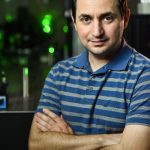
Several years ago, the same group from the Technion introduced these ideas in photonics, and demonstrated a Photonic Topological Insulator, where light travels around the edges of a two-dimensional array of waveguides without being affected by defects or disorder.
Now, the researchers found a way to use the properties of photonic topological insulators to build a new type of laser which shows a unique fundamental behavior and greatly improves the robustness and the performance of lasers arrays, opening the door for a vast number of future applications.
“This new laser system went against all common knowledge about topological insulators” said Prof. Segev of the Technion. “In a nut shell, the unique robustness properties of topological insulators were believed to fail when the system contains gain, as all lasers must have. But we have shown that this special robustness survives in laser systems that have a special (“topological”) design, and is able to make the lasers much more efficient, more coherent, and at the same time immune to all kinds of fabrication imperfections, defects and alike. This seems to be an exciting avenue to make arrays of miniature lasers work together as one: a single highly coherent high power laser.”
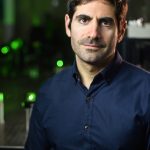
In their research, the scientists built a special array of micro ring resonators whose lasing mode exhibits topologically-protected transport – light propagates in one direction along the edges of the laser array, immune to defects and disorder and unaffected by the shape of the edges. This in turn, as they experimentally demonstrated, leads to highly efficient single-mode lasing that lasts high above the laser threshold. “It is a great pleasure to see fundamental research pans out to have such profound yet tangible applications” said Prof. Christodouldies from UCF.
The fabricated array used standard semiconductor materials, without the need for magnetic fields or exotic magneto-optic materials; hence it can be integrated in semiconductor devices. “In recent years, we have found new tricks to manipulate light in an unprecedented way. Here by using clever designs, we fooled photons to feel as if they are experiencing a magnetic field and they have spin,” said Prof. Khajavikhan, one of the lead scientists in the team.
The researchers demonstrated that not only are topological insulator lasers theoretically possible and experimentally feasible but that integrating these properties create more highly efficient lasers. As such, the results of the study pave the way towards a novel class of active topological photonic devices that may be integrated with sensors, antennas and other photonic devices.
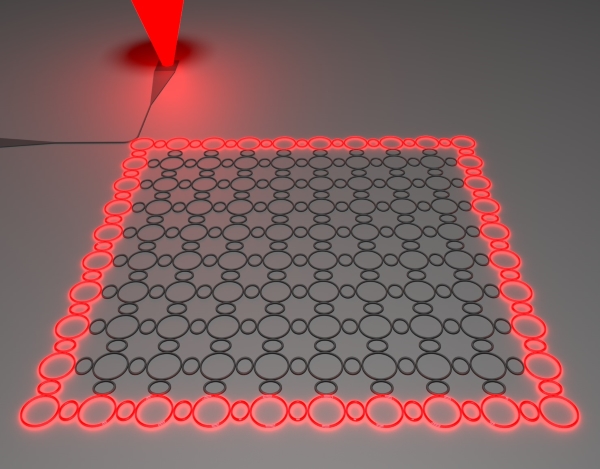
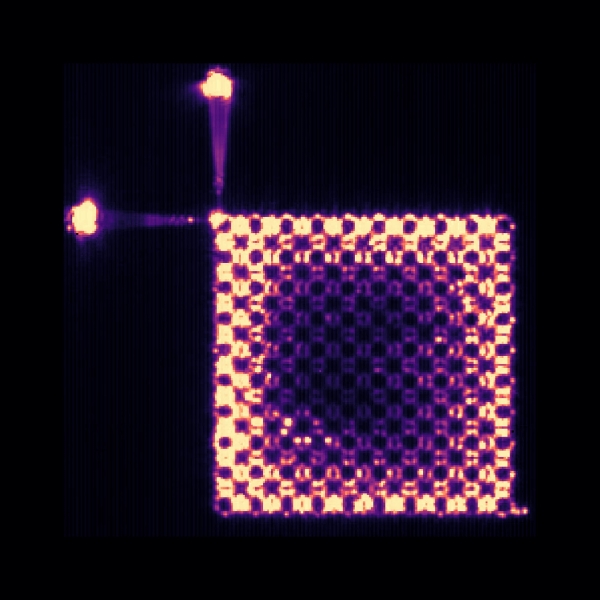
Images Credit: S. Wittek (CREOL) & M.A. Bandres (Technion)
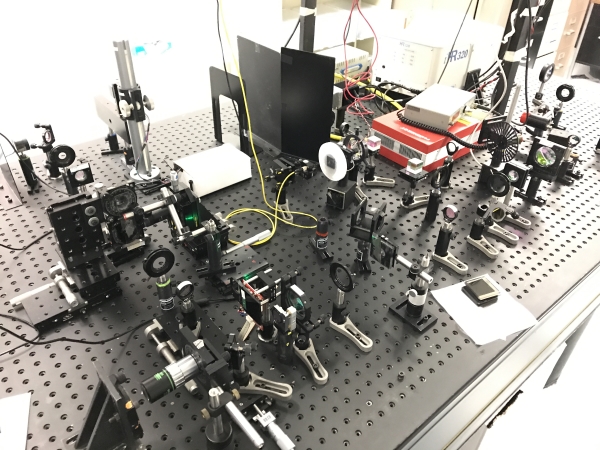
2017 Harvey Prize Winners Announced
The Technion will award the prestigious prize to Professor Tobin Marks for breakthroughs in chemistry and to Professor Carla Shatz for her discoveries in the development of visual neural circuits
On June 10, 2018, the Technion will award the 2017 Harvey Prize in Science and Technology to Professor Tobin Marks from Northwestern University (USA) and to Professor Carla Shatz from Stanford University (USA). The $75,000 prize, named after longtime Technion supporter Leo Harvey (1887-1973), was established in 1972 as a bridge of good-will between Israel and other nations, and is granted annually to individuals who have made significant contributions to humankind. The Harvey Prize is considered by many as a precursor to the Nobel Prize, with some 20% of the Harvey Prize laureates later becoming Nobel laureates. Shortly after winning last year’s Harvey Prize, Professor Emeritus Rainer Weiss and Professor Emeritus Kip Stephen Thorne, who led the discovery of gravitational waves in 2015 in the framework of the LIGO collaboration, were granted the 2017 Nobel Prize in Physics.
Far-reaching effect of modern chemistry

Professor Tobin J. Marks will receive the Harvey Prize for his ground-breaking research that has both fundamental and practical significance, in the areas of catalysis, organo-f-element chemistry, electronic and photonic materials, and coordination chemistry, all of which have strongly impacted contemporary chemical science.
Born in 1944, Professor Marks is a member of the Department of Chemistry at Northwestern University. He completed his BSc in Chemistry at the University of Maryland in 1966 and his PhD at MIT, in 1971. He has received many prizes throughout his academic career, including the Karl Ziegler Prize, granted by the German Chemical Society; the Priestley Medal of the American Chemical Society; and the National Medal of Science (USA). In 2011, he won the Schulich Excellence Award from the Technion.
Professor Marks is a world-renowned expert in many fields, including catalysis, printed electronics and solar energy conversion devices. He has developed a variety of recyclable plastics, screens, electronic components and cells for conversion of solar energy to electricity. His specialties include polymer and metal chemistry, photonic materials, super-conductors and organometallics.
Plasticity of the early development of vision
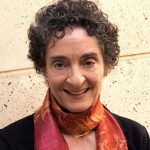
Professor Carla J. Shatz will receive the Harvey Prize for her discoveries about the emergence and function of brain circuits for vision. Her major contributions to science include fundamental discoveries about how brain circuits in the developing visual system are fine-tuned with experience and neural activity. These molecular and circuit level findings have therapeutic implications for treating memory loss in the aging and in neurodevelopmental diseases.
Professor Shatz, born in 1947, is a professor of biology and neurobiology at Stanford University. She completed her BSc in Chemistry in Radcliffe College, which operates today as a part of Harvard University. She completed her MPhil Physiology at the University College London and her PhD in neurobiology at the Harvard School of Medicine. As a doctoral candidate at Harvard, she was mentored by Professors David Hubel and Torsten Wiesel, the 1981 Nobel Prize laureates in Medicine. Prof. Shatz was the first woman to receive a doctorate in neurobiology at Harvard.
A member of many professional societies that include the American Academy of Arts and Sciences, she has been awarded numerous prizes in neuroscience, including the Gerard Prize, Gruber Prize and Kavli Prize.
אמריקה בריבוע
ארבעה סטודנטים מצטיינים מהטכניון חזרו מקורנל-טק לאחר שפיתחו שם יישומים חדשניים בתחומים שונים
הדס אורגד, מרוה מועלם, עוזי סמג’ה וחאדי חדאר התחילו את שנת הלימודים הנוכחית אחרי חווית קיץ ייחודית: שהות בקמפוס קורנל-טק בניו יורק. הקמפוס, שהחל לפעול הקיץ ונחנך רשמית ב-13 בספטמבר, הוקם בעקבות זכייתם של הטכניון ואוניברסיטת קורנל בתחרות שיזם ראש עיריית ניו יורק לשעבר, מייקל בלומברג. במסגרת הקמפוס פועל מכון טכניון-קורנל ע”ש ג’ייקובס.
שהותם של ארבעת הסטודנטים מהטכניון בקורנל-טק היא חלק מתוכנית לחילופי סטודנטים בין שני המוסדות. לדברי לירז מנצ’ל, אחראית קשרי טכניון-ג’ייקובס, “אנחנו בוחרים את הסטודנטים שלנו בקפידה, והתגובות בהתאם – המנחים שמארחים אותם שם מתפעלים מאוד מרמת הידע שלהם ומתפלאים שרובם סטודנטים לתואר ראשון שמעולם לא עסקו במחקר. השהות בקורנל-טק כמובן מעשירה את הסטודנטים אבל גם תורמת תרומה משמעותית למחקר בקורנל טק, ולכן נוצר שם ביקוש לסטודנטים נוספים שיגיעו בקיץ הבא. התקווה שלנו היא שבעקבות הקשרים האלה ייווצרו קשרי מחקר ארוכי טווח בין פרופסורים משני המוסדות.”
עוזי סמג’ה, חיפאי, כבר מתחיל ליצור קשר כזה. “הגעתי לקורנל טק בתחילת הלימודים שלי לתואר שני ועבדתי עם פרופ’ מור נעמן ממכון טכניון-קורנל על דפוסים של קריאת טקסט. הרעיון הוא להבין מה הקורא רואה, כמה זמן הוא עוצר על טקסט, מתי הוא חוזר לפיסקאות קודמות. זה משהו שהייתי רוצה להמשיך כאן במסגרת התואר השני, ואני מקווה שתהיה לי הנחייה משותפת של פרופ’ נעמן עם חבר סגל מהטכניון.”
הטכניון מספק למשתתפים בתוכנית כרטיס טיסה, ביטוח רפואי והוצאות קיום בסך 2,500 דולר. רוב הסטודנטים שוהים כ-8 שבועות בקורנל טק וזו עבורם ההזדמנות הראשונה להשתתף במחקר אקדמי. מרוה מועלם מהכפר עילבון עשתה את הקיץ בקורנל-טק בהנחיית פרופ’-משנה יואב ארצי החוקר את הממשק בין למידה עמוקה לעיבוד שפה טבעית. היא התמקדה ביכולתם של רובוטים להבין הוראות פעולה כתובות שהם מקבלים. מרוה הגיעה לטכניון אחרי לימודים בתיכון הישראלי למדעים ולאמנויות בירושלים. כיום היא לומדת לתואר ראשון כפול – מתמטיקה ומדעי המחשב – במסגרת תוכנית רוטשילד טכניון למצוינים (שנה ג’).
האדי ח’דר מהכפר ואדי חמאם לומד גם הוא במסגרת תוכנית רוטשילד טכניון למצוינים וזו השנה האחרונה ללימודיו במסלול הכפול של פיזיקה ומדעי המחשב. “הנסיעה לקורנל הייתה הזדמנות ראשונה לעבוד על בעיה מעשית משמעותית ולהרגיש שיש כאן תרומה ממשית לחברה.” בהנחיית פרופ’ איתי גורביץ הוא חקר, מנקודת מבט של מודלים מתמטיים, את הבעיה של התאמת תרומות כליה למטופלים הנזקקים להן. “יתכן שאני רוצה לתרום לאחי כליה, אבל עקב אי התאמה זה בלתי אפשרי. יתכן שהפתרון טמון בכך שמישהו אחר יתרום לאחי כליה ואני אתרום לאחיו של אותו תורם. יש כאן אפשרויות מורכבות מאוד ולכן חשוב מאוד לפתח מנגנון שעשוי לפתור אותן באמצעים מתמטיים.”
הדס אורגד, ילידת נתניה הלומדת גם היא בפקולטה למדעי המחשב (שנה ב’), השתתפה בקורנל-טק בפיתוח אמצעי הגנה על משתמשי אנדרואיד מפני מעקב. לדבריה, “רבים מהיישומים החוקיים שאפשר להוריד ב-Play Store של אנדרואיד מאפשרות לגורם חיצוני לעקוב אחר המשתמש. האפשרות הזאת מנוצלת בעיקר בהקשר של אלימות בתוך התא הזוגי, כשבן הזוג של הקורבן מטיל עליו אימה ומשבש את חייו באמצעות אותם יישומים. מאחר שלא מדובר ברוגלות קלאסיות (spyware), אפליקציות האנטי-וירוס הקיימות בשוק לא מזהות אותן ולא מתריעות מפניהן. הפרופסורים שהנחו אותי שם, טום רינסטפרט וניקי דל, פיתחו ‘רשימה שחורה’ של אפליקציות קיימות עבור משתמשים שרוצים להגן על עצמם מפני מעקב כזה. הבעיה היא ששוק האפליקציות מתחדש בקצב מסחרר, ולכן התמקדתי בפיתוח תוכנה שמזהה אפליקציות כאלה גם אם אינן כלולות באותה רשימה שחורה.”
בתמונות:
הדס אורגד
עוזי סמג’ה
מרוה מועלם והאדי ח’דר
Sealantis Receives CE Marking for Surgical Sealant
SEALANTIS RECEIVES CE MARKING FOR Seal-G ® SURGICAL SEALANT FOR GI PROCEDURES
Haifa, Israel January 4th, 2017

The CE will allow to market the product in the Europe and additional other countries.
Seal-G helps preventing anastomotic leaks – a serious complication that occurs in 5-15 % of patients undergoing GI surgery. One third of the post-surgical mortality after colorectal surgery is attributed to leaks and it is considered by GI surgeons as the most devastating complication. In addition to its clinical outcome, this serious complication can cause up to a five-fold increase in patient management costs. Seal-G Surgical Sealant reinforces the anastomosis during the initial post-surgery period, when the development of leaks is most likely to occur.
“The Seal-G CE marking approval represents a key milestone on our journey to commercialize the Sealantis platform technology” said Avi Kerbs, Sealantis Chairman and Teuza fund CEO. “We look forward to make Seal-G available to patients and surgeons in Europe, China and globally.
“The CE marking approval for Seal-G is a major achievement for our team” said Tomer Fuchs, Sealantis CEO. “This approval clearly indicates that Seal-G and our supporting quality system met the essential requirements for product safety, performance and usability, in compliance with growing rigorous requirements set by the EU regulations.”
About Sealantis
Sealantis is a leader in the development and manufacturing of tissue adhesives and sealants intended to improve the recovery of patients following surgery. The Sealantis Algae-mimetic technology platform, developed at the Technion, is a protein-free plant based technology,
which provides excellent adhesion in a wet surgical field and is easy to use and handle
Sealantis flagship product, Seal-G is designed to reinforce the suture or staple-line in GI surgery. Seal-G has a CE marking for sale in the EU. In the US, Seal-G is not approved by FDA and is not yet available for sale. The company’s future products include absorbable hemostatic sealant and a Dural sealant for neurosurgery. Sealantis pipeline products are in development and have not yet been approved for sale in the US or in any other market.
The Body’s Golden Gate to Iron Traffic
January 21, 2018 (HAIFA, ISRAEL) – Iron is an essential component of life. It is responsible for transporting oxygen in red blood cells, for activation of enzymes involved in DNA production and for energy production in the cell. Iron deficiency impairs oxygen transfer throughout the body, cell division and energy production yet, excess, ‘free’ iron, i.e. iron that is not bound to any protein, may trigger oxidative stress that can be toxic to the organism. Therefore, both, iron deficiency or overload may lead to stress, which mediates inflammatory diseases, cancer and neurodegenerative diseases, such as Alzheimer’s and Parkinson’s disease.
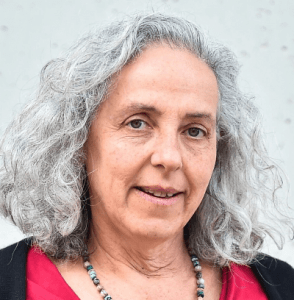
The cover story of Blood Journal’s January 18 issue presents research conducted in the Technion Faculty of Biotechnology and Food Engineering that uncovers, for the first time, a mechanism for cellular transport and secretion of ferritin, a protein that was considered central mainly to iron storage in the human body. Led by Dr. Marianna Truman-Rosentsvit and Assistant Professor Esther Meyron-Holtz, the benchmark study significantly advances our understanding of the way the body handles iron, opening new horizons for research and therapeutics.
Ferritin is one of the central factors regulating cellular iron content and protecting the organism from iron toxicity. The article describes the distribution of this protein within cells and the mechanisms underlying its secretion from the cell.
“Ferritin is a protein essential to the body’s iron balance and there is a strong correlation between impaired iron and ferritin balance and a range of pathological and neuropathological processes,” says Assistant Professor Meyron-Holtz. “Thus, our discovery opens the door to a more accurate and comprehensive understanding of the characteristics of ferritin and molecular processes it undergoes, which is highly important. Such insights are bound to contribute to the development of therapies for the numerous neurodegenerative diseases, which are characterized by abnormal iron distribution in the brain.”
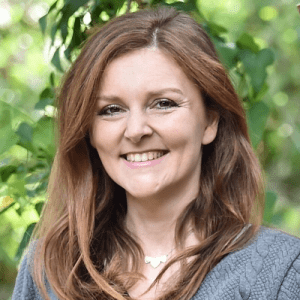
The Blood Journal study describes and explains the intracellular distribution in, and secretion of ferritin from macrophages, cells of the immune system that play a central role in the systemic iron cycle. The work involved bioinformatics tools to analyze the evolution of ferritin secretion, its three-dimensional shape and topologies that may be involved in its distribution.
“Using these computational tools let us predict sites on ferritin that play roles in its secretion. A variety of biochemical techniques, including the CRISPR-Cas9 technology, which enables rapid genome editing, revealed that manipulating these specific sites indeed affected ferritin-secretion” reported Assistant Professor Meyron-Holtz.
The article revealed two non-classical mechanisms central to ferritin secretion, of which one is associated with a tiny vesicle called the exosome. “Many research teams are currently studying the dynamics of substance transport in exosomes – a platform that enables these substances to penetrate the blood-brain barrier. Our current publication shows, for the first time, that ferritin containing thousands of iron atoms is present in extracellular exosomes” reported Dr. Truman-Rosentsvit. “It remains unclear what its role is, however, we assume that it is involved in intercellular iron distribution in tissues including the brain. Finding iron rich extracellular ferritin strongly implies that ferritin is not merely a vessel for secure and available storage of iron within the cell, but also a key player in tissue and systemic iron distribution.”
The findings of this study move ferritin to the center stage of systemic iron metabolism, as a protein that not only stores, but also transports iron in a controlled manner, giving it all attributes of an iron regulator.
Biomedical Informatics at Technion
Big Step for the Future of Medicine: Biomedical Informatics Conference at the Technion
At the international conference, experts discussed the use of Big Data and deep learning in numerous fields related to development of “precision medicine”
On December 13-14, the Technion-Israel Institute of Technology hosted the first international conference on biomedical informatics – a field based on computerized analysis of the overall data amassed by academia, hospitals and health funds. The use of deep learning, Big Data and other technologies gives experts the ability to analyze information in an intelligent, rapid and efficient manner. The goal is to precisely adapt treatments to specific patients.
Technion President Prof. Peretz Lavie congratulated the organizers, Dr. Kira Radinsky and Prof. Roy Kishony, Director of the Technion’s Lorry I. Lokey Interdisciplinary Center for Life Sciences and Engineering. “We’re living in a fascinating era for scientific research, an era where extensive data is used to improve diagnoses and treatment. There is no doubt that Israel in general, and the Technion in particular, is an excellent location for such a pioneering conference, since the Technion is one of the only technological institutions in the world with its own medical school. Our cooperation with China, where the Guangdong Technion Israel Institute of Technology was recently inaugurated, opens us to a goldmine of data.”
Serial entrepreneur Jonathan Adiri gave a keynote lecture about “The Era of Permanent Revolution.” Adiri was Pres. Shimon Peres’s Chief Technology Adviser, a position that enabled him to build ties in the U.S. and Korea. He was president of the inaugural class of Singularity University (2009), which was founded by NASA and Google, and is the founder of Healthy.io, a medical diagnostics company based on the use of Smartphone cameras, that was recently mentioned in The Economist.
Adiri described the challenges that will be encountered by tech companies in the near future, when Smartphones will be used for inexpensively and quickly diagnosing diseases. “We are in the midst of a time of perpetual revolution,” he said. “Innovation revolutions don’t happen if they aren’t economically beneficial. For example, the drone market experienced a drastic plunge in prices – parts that cost $100 in 2007 now cost 50 cents. The computing power of the iPhone 4, which currently costs hundreds of dollars, is stronger than the computing power of the first mission to the moon. The success of reusable space launchers is so huge because of the economic considerations: these launchers save enormous amounts of money. Imagine that every time an airplane lands after a flight, it would be destroyed – this was the situation with previous space launchers. Israel is very well positioned for this era, for shaping the future and spreading knowledge, thanks to an efficient and decentralized system of decision making.”
Hanna Bayer, the Chief Scientist of New York University’s HUMAN project , which will be launched in 2018 in New York City presented the project that will collect information from approximately 10,000 people from all five boroughs for a period of 20 years. The data will be collected on a single research platform and will be used by researchers from all over the world for analyzing data connected to health, education, genetics, the environment and lifestyle. The aim is to identify the links between different variables using Big Data technology. According to Bayer, “instead of looking for specific data and connecting them to a person’s health, we will continuously monitor a large spectrum of data related to a person’s biology, genetics, behavior, environment, food intake and exercise regimen, as well as what he buys and with whom he meets. The idea is to measure everything that can be measured, based on a large sample and over a long period of time, in order to reach conclusions that can be implemented and will help improve human health.”
Dr. Ran Balicer, Director of the Clalit Research Institute in Israel, spoke about the future challenges in medicine from the point of view of the service provider. “Health funds and hospitals are contending with several large challenges simultaneously: the aging of the population, the large number of diseases and harsh budget restrictions. A considerable part of the solution to these challenges lies in technology. Technology can help us prevent medical errors, which is the third most common cause of death in the world – before accidents, diabetes, drugs, etc. – by preventing unnecessary (or harmful) interventions, which currently account for about one-third of all medical procedures, and by carrying out procedures not currently done today. Clalit Health Services, which is responsible for 53% of people insured by Israel’s health funds, provides hospital care in addition to community medical services. We have accrued an enormous amount of data, and our goal is to harness this information for the good of the patient. We will do so through proactive medicine that invites the patient to carry out critical tests before he feels that there is a problem and before the symptoms appear. We have had several successes in predicting diseases and adapting treatment to specific patients, and we do everything in order to improve our use of technology for the patient’s benefit.”
Dr. Varda Shalev, Director of Maccabi Health Care Services’ Institute for Research and Innovation, said that “in the past, the medical staff wanted information. Today, there is plenty of information and what they’re lacking is the tools to analyze the information. Maccabi has approximately two million members – a relatively large and stable cohort – and all tests are carried out in a single lab. That’s an excellent base for using innovative technology to analyze data, and we are expending a great deal of effort to do so in the most effective ways. One example is our cooperation with the organizer of today’s conference, Prof. Kishony, analyzing urine tests carried out all over Israel.”
Conference organizers: Dr. Kira Radinsky and Prof. Roy Kishony of the Technion’s Lorry I. Lokey Interdisciplinary Center for Life Sciences and Engineering
Dr. Kira Radinsky, who began studying at the Technion’s Computer Science Faculty at the age of 15, completed three degrees at the Faculty: a B.Sc. as part of the Rothschild Scholars Program for Excellence, and a Masters and Ph.D. under the supervision of Prof. Shaul Markovitch. Already while pursuing her Masters degree, Dr. Radinsky developed a metahodology for predicting future events based on Internet queries. Based on this methodology, she founded the company SalesPredict, which was eventually acquired by eBay. Companies hire SalesPredict to forecast the probability of selling products to other companies, and following its acquisition, Dr. Radinsky was appointed eBay’s Chief Scientist in Israel. She is currently a guest professor at the Technion.
At the conference, Dr. Radinsky’s lecture presented possible ways to harness deep learning and big data for identifying various causal links related to medicine. “Rather that looking for specific links based on our hypotheses, we can let the computer find such links without guidance, based on a huge sample set. For example, in this way we were able to find unknown side effects of medicines and combinations of medicines. I believe that in the future we will not only be able to examine the effects of combining medicines but also develop new medicines in this manner. It’s important to point out that this is a completely new type of science that isn’t based on experiments that test hypotheses but, rather, on data that determine the research’s hypothesis.”
Prof. Roy Kishony is the head of the Lorry Lokey Interdisciplinary Center for Life Sciences and Engineering at the Technion and a faculty member of both the Technion’s Biology and Computer Science departments. In 2016, Prof. Kishony published an article in the journal ‘Science’ where he presented an innovative platform that makes it possible to precisely track bacteria’s evolution while they are developing resistance to antibiotics. This platform was the first demonstration of its kind showing the connection between genetic adaptation and spatial constraints.
Prof. Kishony’s lecture at the conference discussed the necessary processes given the fear of a post-antibiotic era when bacteria won’t react anymore to antibiotic drugs. “We must not only know the bacteria’s current resilience level, but also which resilience level they are expected to develop, and maybe initiate a reverse process that will prompt them to develop renewed sensitivity to the drug. This is ‘anticipatory medicine’ that will give us ways to diagnose the disease before its outbreak – a diagnosis that will make it possible to predict the future and create a treatment that is better adapted to the patient.”
The students Lindsay Moore and Idan Yelin were the winners of the scientific posters competition that took place at the conference. Lindsay Moore poster presented the Alignment of Single-cell based development trajectories, and Idan Yelin poster presented Genomic proof of probiotic transmission from capsule to blood in patients with Lactobacillus Rhamnosus GG Bacteremia.
.
The Evolution of Bacteria on a “Mega-Plate” Petri Dish from Harvard Medical School on Vimeo.
Photosynthesis-Inspired Hydrogen Fuel Production
January 10, 2018 (HAIFA, ISRAEL) – Over the past few decades, research groups from around the world have been addressing the challenge of splitting water in order to produce hydrogen. The reason for this interest is that hydrogen fuel is a ‘green’ and ecological alternative for existing fuels, produced from an inexpensive and readily available resource – water. It is also the only by-product of hydrogen-powered cars, which is in stark contrast to the polluting fumes that gasoline-powered vehicles emit.
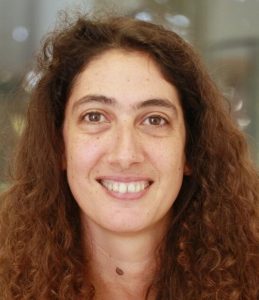
In an article published in the Nature Catalysis, Assistant Professor Galia Maayan of the Schulich Faculty of Chemistry at Technion – Israel Institute of Technology presents a molecular complex (also called an artificial molecular cluster) that dramatically improves the efficiency of water oxidation. It does so by biomimicry – a field of engineering inspired by nature (bio=life, mimetics=imitation). In this specific case, the inspiration comes from the process of photosynthesis in nature.
Photosynthesis is a natural process that developed in plants, bacteria and algae through evolution. Energy from the sun is used to transform water and carbon dioxide into organic material and oxygen. This process is vital for life on Earth, because all animals incapable of performing photosynthesis (including human beings) are nourished from the food chain whose first link is photosynthetic bacteria. In addition, the oxygen we breathe originates in photosynthesis.
Manganese (Mn), is one of the essential elements in the photosynthesis process. Inspired by nature, much research was conducted in order to enable the utilization of manganese as a catalyst for water splitting, in combination with electricity as an energy source, aiming to produce hydrogen – a process known as water electrolysis. Each molecule of water, H2O, contains one oxygen atom and two hydrogen atoms, which are split using energy from an electric current. This is done with a cathode and an anode; the cathode contributes electrons to the water and attracts oxygen, and the anode takes electrons from the water and attracts hydrogen. This is a very challenging process, often requiring large amount of energy to set it in motion. Moreover, Mn-based catalysts are often unstable and decompose rapidly during this process.
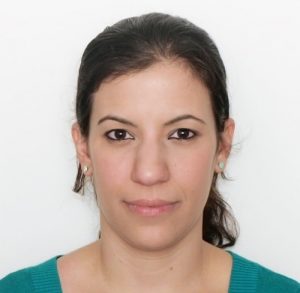
The molecular complex developed by Maayan is expected to change this situation. This cluster, which is actually a complex molecule called Mn12DH, has unique characteristics that are advantageous when splitting water. Experiments conducted with this complex demonstrate that it produces a large quantity of electrons (electric current) and a significant amount of oxygen and hydrogen, despite a relatively low energetic investment. No less important, it is stable – meaning that it is not easily demolished, like other Mn-based catalysts.
According to Maayan, “In nature, evolution created a protein shell around the manganese core that stabilizes it and prevents its dissolution. Inspired by this natural structure, we developed an organic shell that enables the manganese complex to dissolve in water and stabilizes it.”
Much of the work described in the article was carried out by the student Naama Gluz as part of her M.Sc. studies under the supervision of Maayan. Gluz is continuing to research the unique manganese complex as part of her doctoral studies. In preliminary experiments, she was able to demonstrate that the complex is capable of splitting water through exposure to light from a simple lamp. In the future, this will make it possible to produce oxygen and hydrogen in large quantities and very rapidly. The idea is that eventually the process will work with solar energy, without requiring electricity.
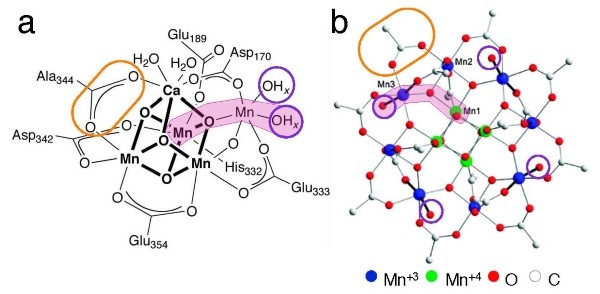
Nanosatellite Swarm Launch for 2018
Israeli pride: Technion to launch first autonomous nanosatellite formation into space in 2018
Science and Technology Minister Ofir Akunis: “Proof of Israel’s Strength”
The project is supported by the Adelis Foundation and the Israel Space Agency of the Ministry of Science

The Adelis-SAMSON Project has been developed in recent years by a team of researchers headed by Prof. Pini Gurfil, Director of the Asher Space Research Institute and member of the Technion Faculty of Aerospace Engineering, and with the support of the Adelis Foundation and the Israel Space Agency. The goal of the project is to prove that a group of satellites can fly in a controlled formation for one year while orbiting at an altitude of about 600 kilometers.
“Israeli technology is breaking new ground and demonstrating its innovativeness over and over again,” said Science and Technology Minister Ofir Akunis. “We are proud to be part of this flagship project, which represents a significant contribution to the advancement of Israeli aerospace and the training of students in this field.”
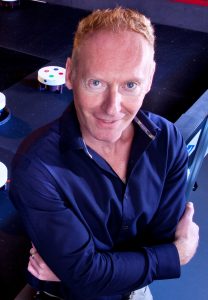
The satellites will be used for receiving signals from Earth and calculating the location of the source of transmission for search and rescue operations, remote sensing, and environmental monitoring. The size of each of the satellites is 10X20X30 cm, about the size of a shoebox, and they weigh a total of around 8 kg. The satellites will be equipped with measuring devices, antennas, computer systems, control systems and navigation devices. The flight software and algorithms were developed in the Technion Distributed Space Systems Lab.
“Satellite miniaturization together with advanced Israeli technology will enable us to take Israel an important step forward in the field of nanosatellites,” explained Prof. Gurfil. “The degree of innovation here can be compared to switching from a PC to a laptop and then to a mobile phone, which offers far more capabilities than its predecessors.”
“The field of nanosatellites has developed significantly in recent years and the number of launches doubles annually,” said Mr. Avi Blasberger, Director General of the Israel Space Agency. “The development and launch costs of such satellites are significantly lower than those of conventional satellites. In the near future, we can expect networks of thousands of nanosatellites that will fly above the Earth and enable high-speed Internet communication at significantly lower cost than today.”
“The nanosatellite program was made possible through the generosity of donors from Israel and abroad who understand the importance of space exploration for the security and prosperity of the State of Israel,” said Prof. Boaz Golany, Technion Vice President for External Relations and Resource Development. “Technion thanks its supporters, led by the Adelis Foundation, for their important role in the realization of this program, and is proud of its partnership with Israel’s aerospace industry. Without the active collaboration with industry, the impressive technological achievements made by the Adelis-SAMSON program would not have been possible.”
The satellite’s unique technology is all “blue and white”: Rafael’s krypton gas-based propulsion system will be the first system in the world to power a tiny satellite. The digital receiver was developed by Elta and the guidance control system was developed at Israel Aerospace Industries MABAT plant in cooperation with researchers from Technion.
In addition to the propulsion system, the satellites will accumulate energy through solar panels that will extend from the sides of each satellite and serve as wings that will control the flight formation without the use of fuel, by means of air resistance in the atmosphere. Each of the nanosatellites will be equipped with a digital signal receiver, one of the most complex receivers ever designed for a nanosatellite. The satellite information processing system and the algorithms that control the formation will be the first of their kind in the world and will support the autonomous operation of several satellites together. The communications and navigation system will include two GPS receivers to be used for autonomous navigation and a communications system to be used by the three nanosatellites in order to communicate with one another and with the ground station – a significant challenge that has been solved in the current project. A dedicated frequency will be used for sending data to Earth via broadband.
“If we manage to prove in space that flying in formation is possible,” said Prof. Gurfil, “it will be a major boost for the development of small satellites and technologies related to the miniaturization of electronic components, for efficient space processing and for space propulsion systems. The technologies developed in the nanosatellites will contribute to a variety of civilian applications and will promote Israel’s aerospace industry.”

